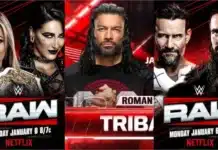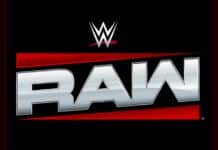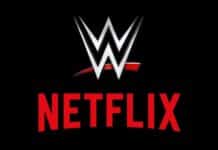This past Thursday, the WWE returned to Saudi Arabia for another highly profitable show as a part of the Saudi government’s propaganda campaign. Once again, the event became the subject of controversy, but it wasn’t because of the location of the show. In fact, the supposed outrage about the WWE’s business dealings with the Saudis wasn’t enough to stop fans from watching the product, or even watching this particular show so why shouldn’t the company take the cash for one of its most profitable venture’s of the year?
However, the dispute among fans after the show went off the air was based on the booking decisions that were made and how it influences the card for Wrestlemania, the show that is usually promoted as the biggest event on the calendar. With only a few weeks of build up, Bill Goldberg was shoehorned into a title match because the Saudi government pays for recognizable stars from the past. Considering the absolute train wreck that was the Goldberg/Undertaker match the last time the former WCW champion performed in Saudi Arabia, many assumed it was basically a televised house show match that would continue to build Bray Wyatt as champion so that Roman Reigns could challenge a major heel at Wrestlemania, especially after the heat that Wyatt got from the Daniel Bryan feud.
Somehow, Bill Goldberg pinned Wyatt in roughly three minutes to win the Universal Championship.
How exactly does any of this logically fit with the direction of the product in the past 3-4 months? Bray Wyatt was presented as an unstoppable force to almost a cartoonish level. That portrayal is ultimately what would be used to push Roman Reigns as the champion if he was the one to finally slay the villain. The ridiculous amount of weapons that Seth Rollins used or any offense from Daniel Bryan wasn’t enough to defeat Wyatt, but the aging Hall of Famer was able to beat him in just a few minutes?
Listen, when Bill Goldberg won the title with the surprise victory at Survivor Series in 2016, I was thrilled because it was a legitimate surprise, which rarely happens in the modern era. Plus, considering the amount of charity work that Goldberg does and how he uses his notoriety for those causes, it was good to see him get a better conclusion to his WWE run than the lackluster finish to his stint in 2004. But, the Goldberg comeback story has been told and there’s a been there, done that atmosphere to it.
That being said, the 2016 run had to be carefully booked and Goldberg, who was limited in his prime, had to be protected so that his weaknesses weren’t exposed to the current audience. The few matches he did during that stint went well and the longest match he had was against Brock Lesnar at Wrestlemania 33 before he finished up that time frame in the company. Considering his age, if you try to play the Goldberg card too often, you risk those weaknesses showing through his tremendous display of intensity. When the Goldberg/Undertaker match flopped because of injuries to both athletes during the contest, in some ways, the myth of Goldberg was exposed and it was a reality check that he’s not the same performer that he was during the Monday Night Wars.
That’s not meant as a jab against him either, it’s a very difficult task to attempt to portray the same in-ring style from two decades ago. At the same time, what does Goldberg as champion accomplish now? The Fiend was supposed to be the ultimate villain that could be used to get a baby face over. Unless Goldberg is going to compete on a regular basis, what does his run as champion translate to for the product? On Smackdown, there was a segment to set up Roman vs. Goldberg at Wrestlemania without any type of number one contender match. Keep in mind, Reigns has been away from the title picture for almost a year and a half so in theory, the win at WM 36 is yet another attempt to get him over as the champion. If beating The Undertaker, Brock Lesnar, and Triple H on pay-per-view didn’t get Roman over then how exactly is Goldberg going to be the key victory for him?
At 53, Goldberg had the comeback run and really doesn’t bring anything else to the table beyond a nostalgia act, which is fine when it’s used correctly, but this latest title victory actually speaks to a much bigger problem among the WWE landscape. I’ve written about it many times in the past few years, but the trend of using stars from the past to boost the current product instead of making new stars continues for WWE programming.
The bottom line is, aside from Brock Lesnar, who currently on the roster is a legitimate money-drawing star for the promotion?
In fact, John Cena is still the last main stream star that the company made and he hasn’t been a full-time performer for the past few years. As I’ve said before, the opportunity cost of the Roman Reigns mega push a few years ago was that other stars had a ceiling as to how over they could get with the audience and sometimes you have to run with a star when the time is right or management missed the boat. Finn Balor, Samoa Joe, Kevin Owens, Sami Zayn etc. probably all should be bigger stars than they are right now. Too often, the majority of the roster were used as interchangeable and there was a certain level of mediocrity in terms of star power. Bray Wyatt was one of the most over acts on WWE TV, but the sum total of his current run didn’t make much progress for the product.
Since Roman Reigns vs. Goldberg is scheduled for the Wrestlemania card, how does that build for the future? When Roman pins a 53-year-old champion, will that make him a bigger star? Furthermore, when will management evolve the product and put the responsibility to draw the stadium crowds to the current generation? The talent has the skills, but aren’t usually given the opportunity. Perhaps, the strictly-structured WWE system doesn’t allow for talent to organically get over as much as they could without those restrictions, but either way, it’s obvious that management continues to depend on the part-time stars to sell tickets.
The reason the company made an entire cast of new stars in the Attitude era is because they had to find the best performers they could and run with them since they had competition for the audience. During the Monday night wars, the corporate agenda couldn’t dictate who got a push because they had to run with the stars that the viewers were going to watch if they wanted to maintain numbers against Nitro. Maybe, it’s the fact that they dominate the market share, the hefty TV contract, the price of the Network, or a combination of all of those aspects, but management doesn’t seem to have the next generation of stars that will draw money as a priority. In some respects, it seems like they are taking the easy money now without taking into account how those decisions could affect the future.
When Brock Lesnar squashed Ricochet in a minute and a half, that more or less tells the audience that he doesn’t have the ability to be a top star. Look at when Kofi was defeated on the Smackdown debut on Fox, he hasn’t had nearly the hype around him since that match. I penned an article two and a half years ago about the diminishing returns that the Brock experiment yielded and I think that status remains today because despite his dominate reign, how many performers has Lesnar made a bigger star? Has WWE management really got a return that justifies their investment of cash and TV time into Lesnar? Don’t get me wrong, if Brock can get the cash, good for him, but it appears that WWE brass would rather depend on Brock to prop up the big events than the task of making legitimate full-time stars. The question about the totality of the decisions of the past several years is, what does the WWE book five years from now when the current part-timers aren’t going to wrestle at the big events? More importantly, who is going to draw money for the WWE after Lesnar, Goldberg, and The Undertaker finally retire?
What do you think? Comment below with your thoughts, opinions, feedback and anything else that was raised.
Until next week
-Jim LaMotta
E mail [email protected] | You can follow me on Twitter @jimlamotta







